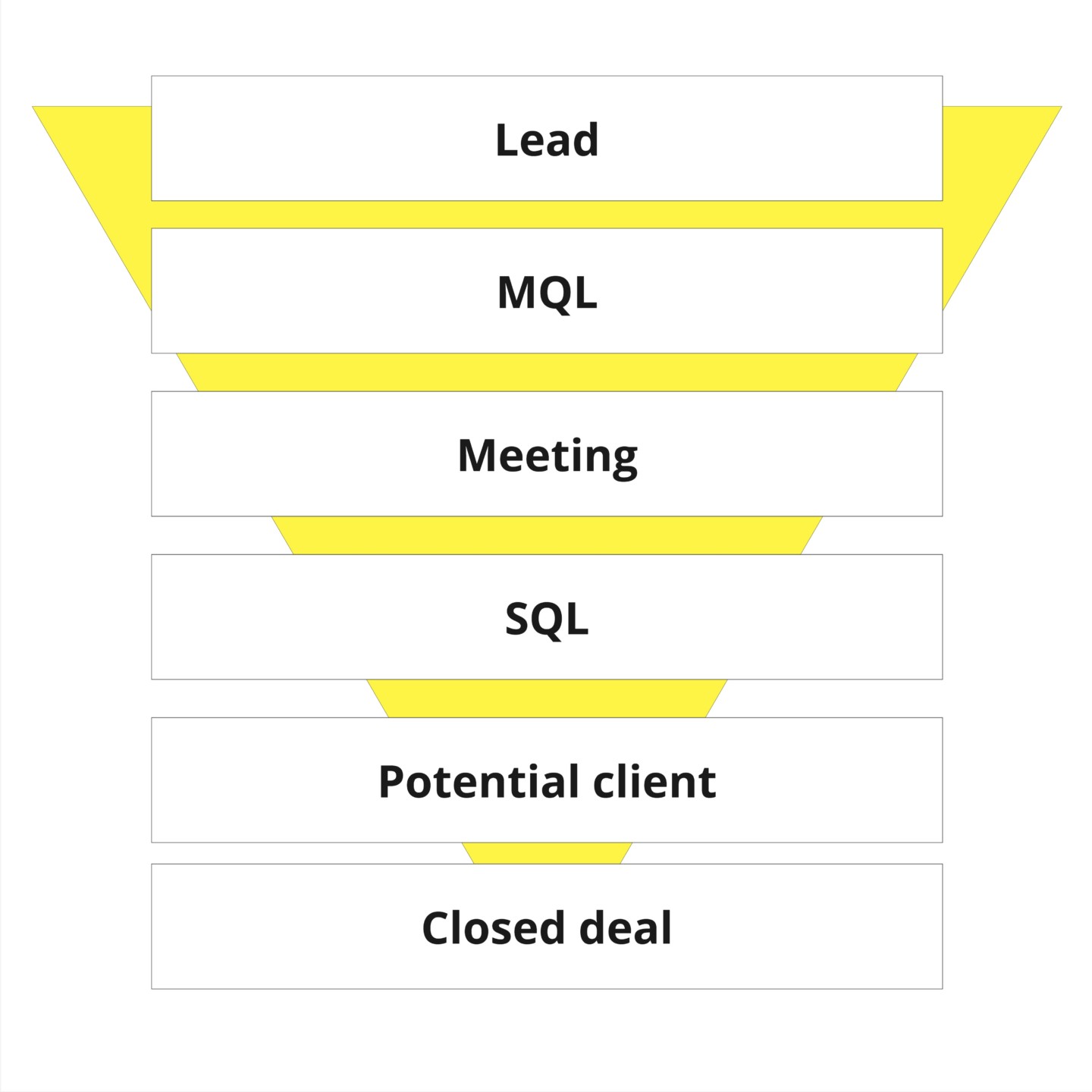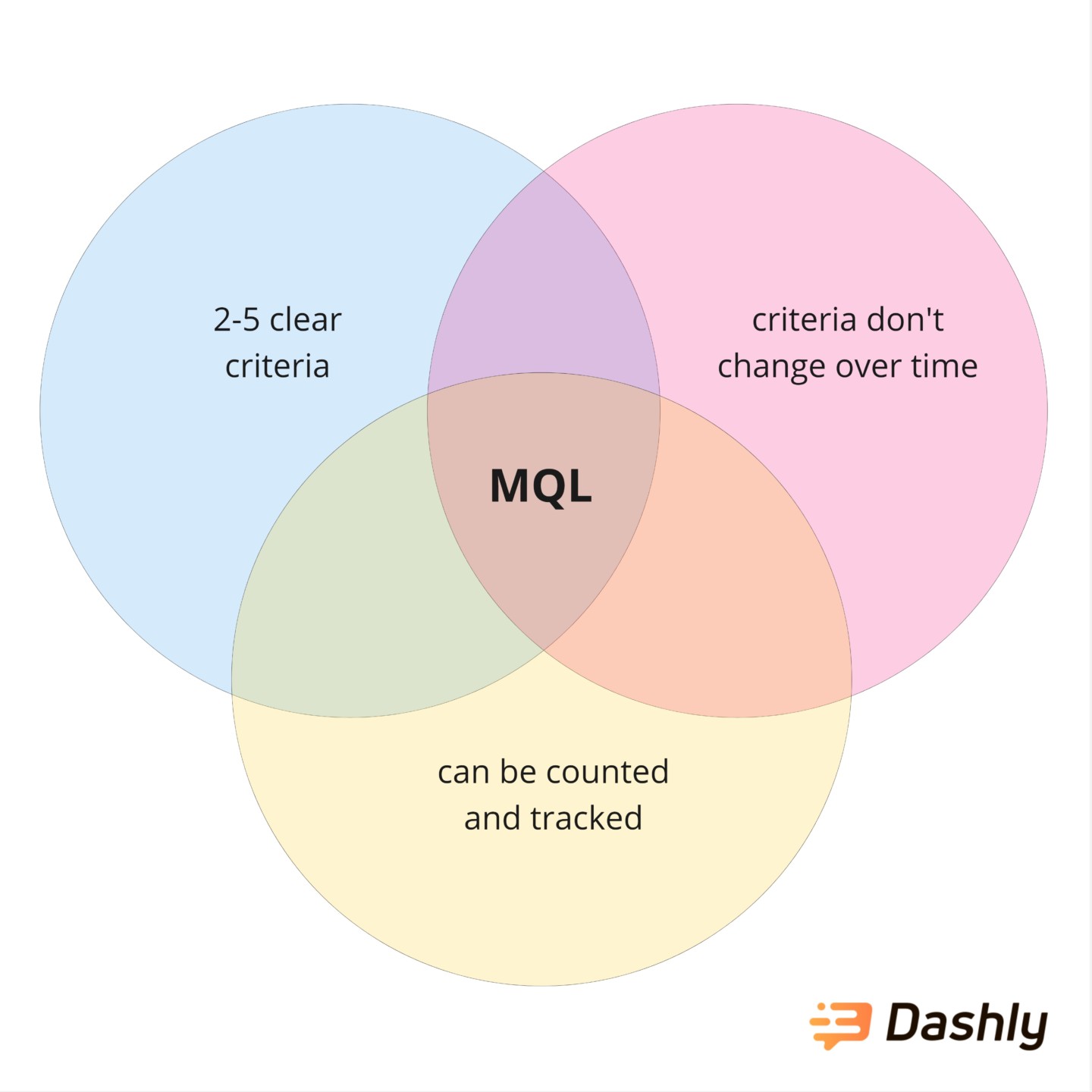MQL: Who are they, and how do they sync marketing and sales efforts?

Dashly team often explores inbound funnels of potential clients. And as we dive deeper, we notice issues with one extremely important metric. Without it, it’s just impossible to plan marketing work and measure its effectiveness.
So, we decided to talk more about MQLs (Marketing Qualified Leads) — what they are, why they’re essential, and why they are crucial for business.
Why Businesses Need the MQL Metric
An MQL is a lead with a specific set of characteristics that marketing transfers to sales for further action.

The MQL metric is necessary for marketers to:
- Set goals not just in “leads,” but in quality leads;
- Understand which channel yields quality leads;
- Compare experiments;
- Assess team effectiveness from period to period.
And here’s the most important thing: to have an intermediate step where marketing can set measurable objectives.
Why Aren’t Sales or SQL (Sales Qualified Leads) Suitable for Goal Setting?
Because as soon as a lead is handed over to the sales team, the marketer no longer manages it. They don’t influence how sales will handle these leads—how quickly they call them, how they qualify them, what kind of script is used.
Consequently, if goals are set on a metric that the marketer is not responsible for, they cannot influence it or take responsibility for it.
Therefore, before the sales process begins, there needs to be a previous metric in which you can set targets in advertising channels and other marketing initiatives.
Merely aiming for leads is a poor goal. Their quality can be very mediocre. And then a fierce war starts between marketing and sales. “Look, we brought you a TON of leads” — “But they’re all low quality!” Sounds familiar, doesn’t it?
That’s why leads that precisely fit a range of characteristics will be a more accurate metric for marketing work, more targeted for sales efforts.
But what exactly are these characteristics?
Read also:
The Upside Sales Approach: Master the Inverted Funnel for Maximum Growth
Sales Funnel Stats That Matter: Boost Conversions and Growth in 2024
Defining MQL
As mentioned earlier, one of the tasks of the MQL metric is to compare different periods, stages of the company’s operations, and the marketing team’s work. Consequently, this metric must be constant. This detail is often overlooked.
For example, it’s unacceptable for a team to define an MQL one way today, another way in 3 months, and yet another in 6 months. Changing the definition hinders tracking the team’s work and the experiments they launch.
I’d introduce three requirements for defining the MQL metric:
- Unambiguously Interpretable — No ambiguity in its understanding, and the criteria do not radically change over time.
- Measurable — It can be easily calculated and tracked.
- Easily Identifiable — Just 2-5 clear criteria are enough.

Let’s take an example: Our company is an international school that teaches children to code. We could define our MQL as:
- Has a valid contact for communication;
- Child speaks English;
- Has a computer.
In this case, criteria like “knowledge of English” or “having a computer” are more specific and stable. These will be important to the school today and six months down the line.
❗ Important: marketing, sales, and revenue teams need to agree on who the MQL is and what their characteristics are. This ensures everyone is in sync.
Why Teams Struggle with Defining MQL
The reasons for difficulty in defining MQLs can vary. We’ve witnessed conflicts between marketing and sales teams: marketing may lack the competencies to establish MQL characteristics, while sales want to include a plethora of requirements that they need.
Working with one client, we jointly defined MQL. We helped to shape it without including overly precise characteristics, the determination of which clearly lies with the sales funnel KPIs.
The process can take some time. But it’s definitely worth it. MQLs are the bridge between marketing and sales. Marketing should have clear criteria for working with leads. The team must understand that “if criterion X is missing, then the lead definitely doesn’t fit.”
Read also:
– Guide to sales funnel optimization: best tips, tools, and common pitfalls;
– 10 inspiring sales funnel examples to boost your business growth;
– Mastering sales funnel analysis: step-by-step guide, tools, and examples;
– Ultimate guide to an AI sales funnel: the best tips, tools and common mistakes to avoid.




![21 proven tools for your 2025 marketing tech stack [Recommended by market experts]](https://www.dashly.io/blog/wp-content/uploads/2022/08/martech-stack-999-720x317.png)
![Top 10 Best Custom Chatbot Platforms for your website [+AI]](https://www.dashly.io/blog/wp-content/uploads/2020/06/cover-1-720x308.jpg)
![Growth Marketing, o que é? O guia definitivo [explicado por um hacker de crescimento]](https://www.dashly.io/blog/wp-content/uploads/2023/04/The-ultimate-guide-to-growth-marketing-explained-by-a-growth-hacker-720x317.png)

